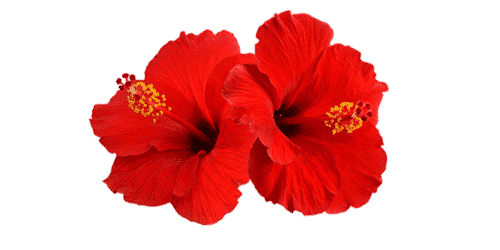
Origin
Originating in Africa, it is known as “Guinea sorrel”. Its young leaves are consumed as a vegetable in various countries of the tropical regions. In Europe, hibiscus is well known as a decorative plant. Its flower is also much appreciated in herbal teas for its tart flavour (kurkadeh).
Did you know?
The taste of the hibiscus flower is often likened to that of the sacred pepper of Patagonia, sweet, fruity and tart.
Characteristics
The hibiscus is a bushy herbaceous plant with a fibrous cylindrical stem. In the right environmental conditions, it can grow up to 4 metres in height. It has spear-like leaves and large flowers that open up to a corolla. This flower is purple in its heart and its petals have a gradient from yellow to pink, Hibiscus is lastly a fruit which is an ovoid capsule containing various dark brown seeds.
Flowering and harvesting
As hibiscus is a plant originating in Africa, it grows in very sunny locations and cannot withstand temperatures below 0 °C. Although it produces fruit in Autumn, the harvesting of the flowers is carried out gradually after flowering. The flower, seeds and roots of the plant are used in phytotherapy.
Benefits
The hibiscus flowers naturally contain anthocyanin sambubiosides, as well as organic acid, flavonoids, polysaccharides, mucilage, pectins and vitamin C.
The flowers:
- Aid the body’s elimination functions2
Hibiscus flowers contribute to the healthy functioning of the urinary tract promoting kidney drainage. They play a key role in the body’s drainage.
- Increase vitality2
The vitamin C contained in hibiscus flowers help to support the body’s vitality and improve physical and mental capacities.1
- Maintain good circulation in the micro vessels2
Hibiscus flowers help to maintain good blood circulation to reduce in particular the feeling of heavy legs.
2http://www.wikiphyto.org/wiki/Karkad%C3%A9
2https://www.mi-aime-a-ou.com/hibiscus_sabdariffa.php
https://jardinage.ooreka.fr/astuce/voir/729177/hibiscus-sabdariffa
